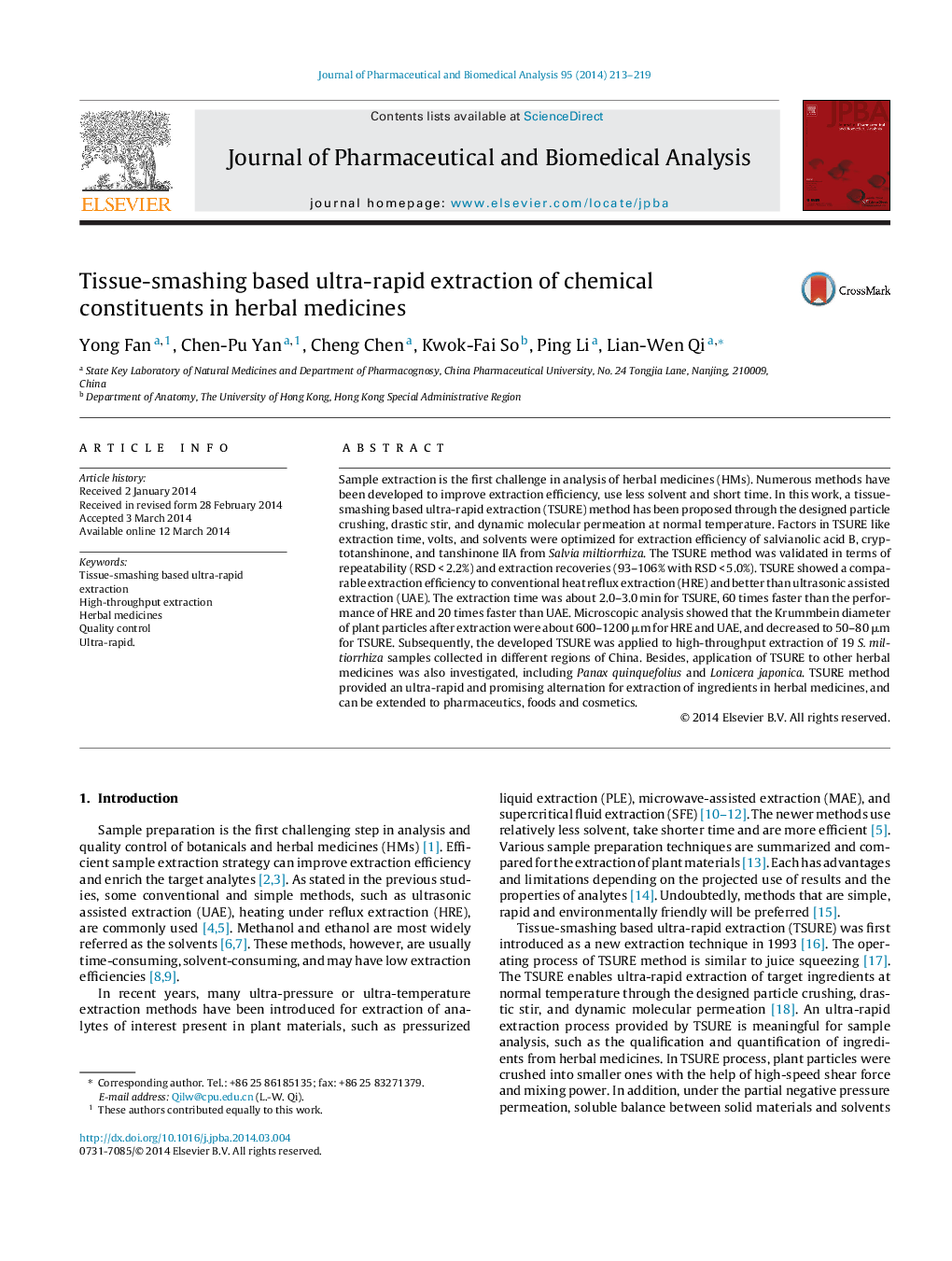| Article ID | Journal | Published Year | Pages | File Type |
|---|---|---|---|---|
| 1221360 | Journal of Pharmaceutical and Biomedical Analysis | 2014 | 7 Pages |
•Three chemical constituents from Salvia miltiorrhiza were extracted by new designed TSURE.•Optimized TSURE offered good extraction efficiency that was comparable or even better than conventional methods.•TSURE method was extended to the quality control of Salvia miltiorrhiza.•Application of TSURE to other herbal medicines was also explored and similar results were discovered.•Mechanisms of TSURE were discussed in detail.
Sample extraction is the first challenge in analysis of herbal medicines (HMs). Numerous methods have been developed to improve extraction efficiency, use less solvent and short time. In this work, a tissue-smashing based ultra-rapid extraction (TSURE) method has been proposed through the designed particle crushing, drastic stir, and dynamic molecular permeation at normal temperature. Factors in TSURE like extraction time, volts, and solvents were optimized for extraction efficiency of salvianolic acid B, cryptotanshinone, and tanshinone IIA from Salvia miltiorrhiza. The TSURE method was validated in terms of repeatability (RSD < 2.2%) and extraction recoveries (93–106% with RSD < 5.0%). TSURE showed a comparable extraction efficiency to conventional heat reflux extraction (HRE) and better than ultrasonic assisted extraction (UAE). The extraction time was about 2.0–3.0 min for TSURE, 60 times faster than the performance of HRE and 20 times faster than UAE. Microscopic analysis showed that the Krummbein diameter of plant particles after extraction were about 600–1200 μm for HRE and UAE, and decreased to 50–80 μm for TSURE. Subsequently, the developed TSURE was applied to high-throughput extraction of 19 S. miltiorrhiza samples collected in different regions of China. Besides, application of TSURE to other herbal medicines was also investigated, including Panax quinquefolius and Lonicera japonica. TSURE method provided an ultra-rapid and promising alternation for extraction of ingredients in herbal medicines, and can be extended to pharmaceutics, foods and cosmetics.
Graphical abstractFigure optionsDownload full-size imageDownload as PowerPoint slide
